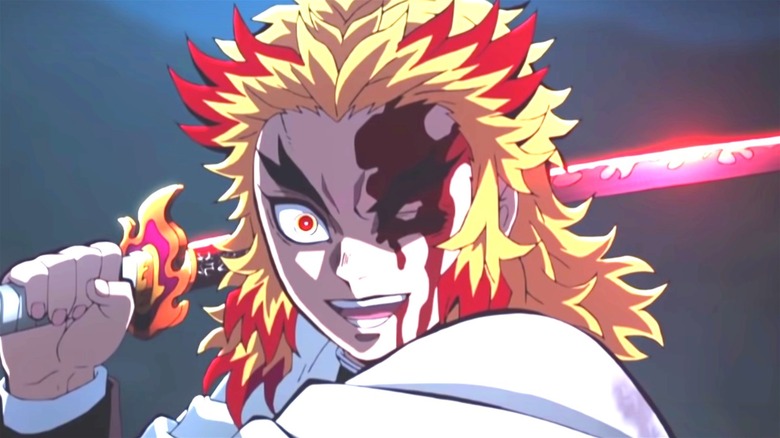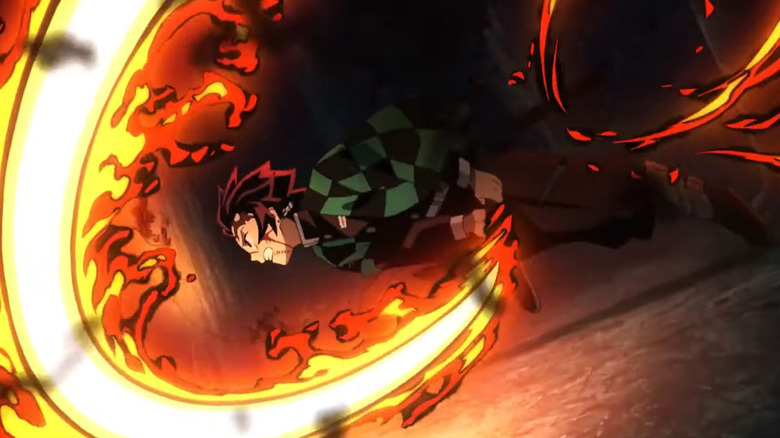The Truth About Demon Slayer's Over-The-Top Sword Techniques
Before "Demon Slayer: Kimetsu no Yaiba the Movie: Mugen Train" became the biggest non-English language film release in U.S. box office history after a record-smashing performance in its home country of Japan (via CNN), the Season 1 episode "Hinokami" had fans of the anime series talking.
Late in a fight between series protagonist Tanjiro Kamado and Rui, a powerful spider demon, Rui suspends Tanjiro's demonic sister Nezuko in midair using sharp, magically-enhanced webbing that cuts deep into her skin. In response, Tanjiro remembers a ritual his father would perform during his childhood utilizing a breathing technique meant to honor a mythical Fire God. In the present, Tanjiro combines his father's Fire Breathing with his signature fighting style, called Water Breathing, to deliver a devastating blow to Rui. Some anime fans consider it one of the best-animated fights in anime history — at least, the ones on Reddit do.
Central to Tanjiro's formidable attack, as the names of both techniques he combines suggest, is the importance of his breath. This is not a characteristic unique to Tanjiro, but a facet of sword fighting consistently emphasized as of the utmost importance throughout "Demon Slayer." Tanjiro's hapless ally Zenitsu, for example, utilizes a technique called Thunder Breathing.
As it turns out, though disciplined breathing cannot actually produce fire or lightning, it is nevertheless a key part of swordsmanship not just in "Demon Slayer" but in real-life martial arts.
Breathing is essential, in demon hunting and in life
In a piece entitled "How Demon Slayer: Kimetsu no Yaiba Gets Some Aspects of Sword Fighting Correct," the blog Historical European Martial Arts Resources details how the breathing techniques in "Demon Slayer" are, in a very broad sense, grounded in reality.
As the article outlines, breathe techniques are a fundamental aspect of virtually all schools of martial arts — from boxing to the sword-fighting sport of Kendo. They even cite a scene in hit American martial arts movie "The Karate Kid" as an example of a fellow fictional work that stresses the importance of breathing in combat. The martial arts in "The Karate Kid," after all, are based on a real-life school of karate called Goju-ryu.
Furthermore, the reason that an emphasis on breathing has historically formed a core pillar of martial arts training is grounded in science. In short, proper breathing allows for athletes — outside of martial arts, even — to maintain a state of physical exertion for longer periods of time. In a fight, a combatant breathing optimally could thus gain a natural advantage over an opponent lacking disciplined breathing.
The piece cites notable sword instructor Guy Windsor as a proponent of learning breathing techniques in order to improve with sword specifically. So, while breathing patterns don't actually unlock elemental affinities, the focus in "Demon Slayer" on breathing as essential to combat prowess is, nevertheless, rooted in reality.

